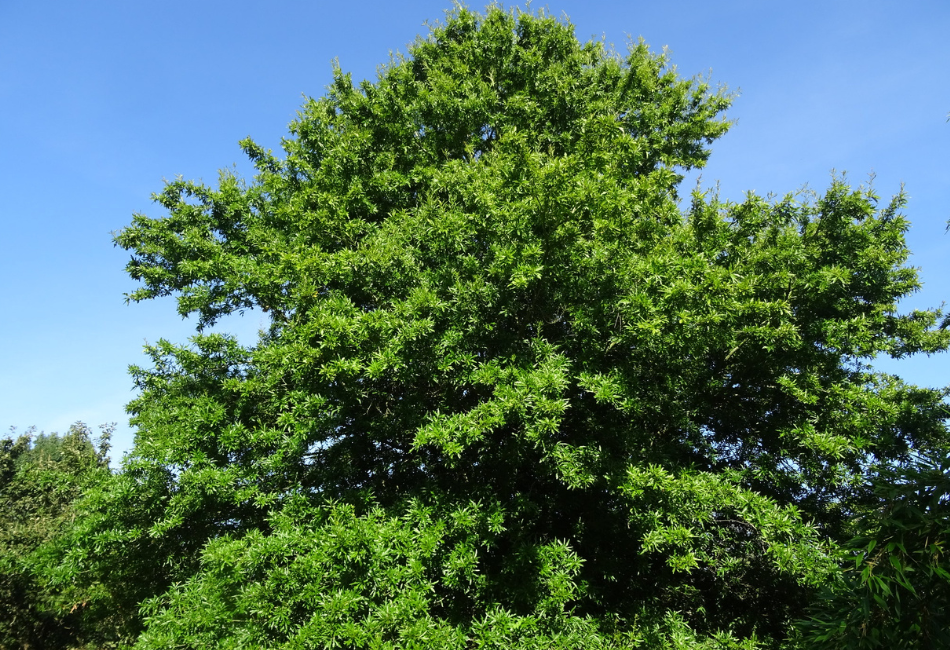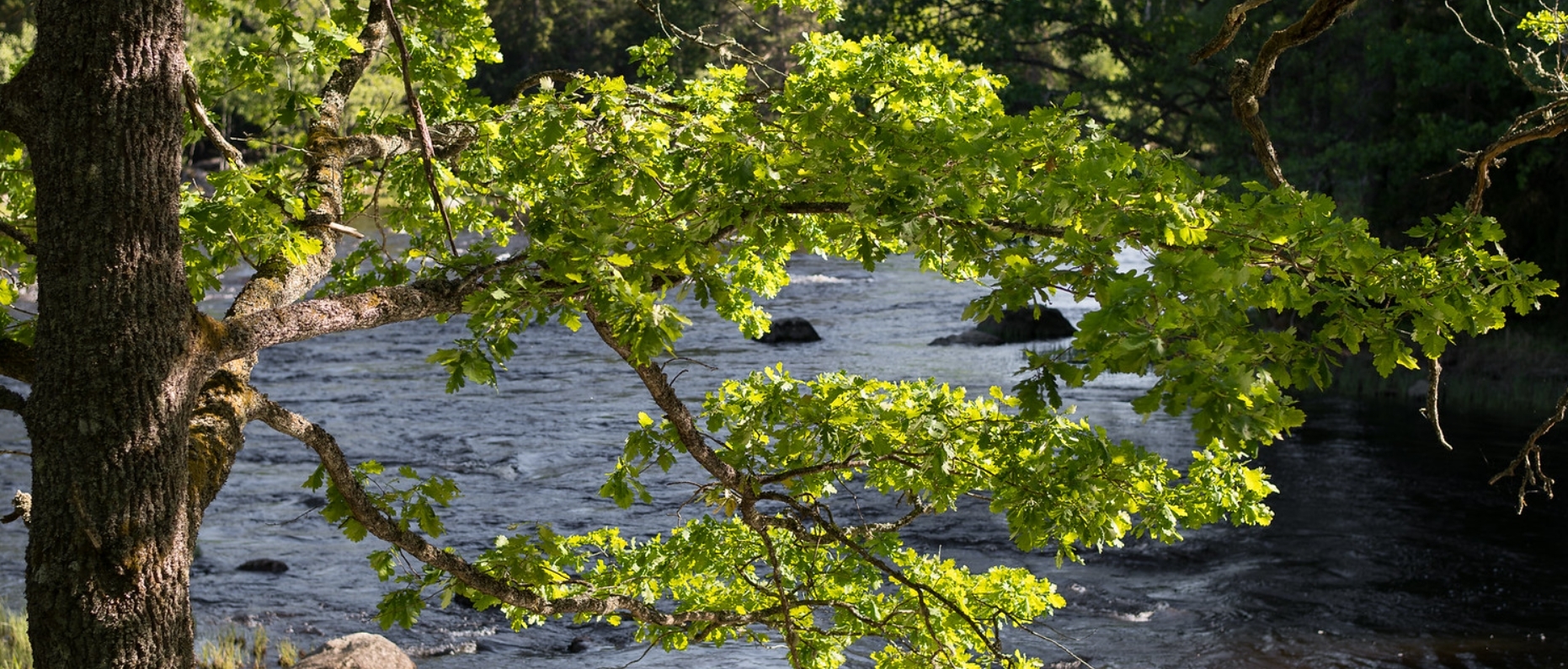- Best Firewood Carriers Guide: Which is Right for You? - July 27, 2022
- Water Oak Tree Guide: All You Need to Know - July 16, 2022
- How to Find the Best Chainsaw Helmet to Protect Yourself - July 10, 2022
The Water Oak, scientifically known as the Quercus nigra, is a deciduous tree that belongs to the red oak group. This Water Oak Tree guide is going to explore this type of wood that is native to the southeastern coastal plains of America, it is sometimes referred to as the orange oak, spotted oak, duck oak, punk oak, or possum oak, and grows fast to reach a height of approximately 30 meters.
The water oak thrives in lowland areas where conditions are moist with an altitude of up to 450 meters above sea level. You can easily identify it by its conspicuous leaves, which have a lobe shape resembling a drop of water. The top of the leaf spots a bluish-green to dull green color, while the bottom has a pale bluish-green shade.
The water oak has a smooth and brown bark at a young age, turning into a gray-black color with rough and scaly ridges as it matures. In the United States, the tree grows in the coastal states, including Texas and New Jersey, extending to inland states like Kentucky, Oklahoma, and Southern Missouri.
Bottom Line Up Front: The water oak (aka Quercus nigra, spotted oak, orange oak, punk, or duck oak) is a type of red oak. It originates in the southeastern US.
The water oak is an attractive mid-sized deciduous tree, making it highly popular for landscapes. The tree lives a comparatively shorter life than other oaks, about 60-80 years. It grows up to 100 feet tall, while its trunk reaches 3 feet in diameter.
Water Oak Tree Types
There are only two well-known types of water oak tree: the Quercus nigra (“fire water”) and the Quercus nigra (“Thierry”).
The fire water typically grows into a small tree that, once developed, exhibits a fiery orange and red shade. On the other hand, the Thierry is a medium-sized tree with a conical shape and rounded crown. Its leaves will normally turn yellow in the fall.
There aren’t so many types because interbreeding of most oaks happens through hybridization, meaning few cultivars come out of the nursery trade.
Uses of Water Oak Tree
Because of their rapid growth rate, water oaks make for excellent shade trees. Their thick foliage offers adequate shelter from the sun, and you can integrate them into your landscape as ornamental trees.
The water oak has been a source of lumber and fuel for many since the 17th century, although the timber isn’t highly rated due to its numerous knots. Nevertheless, its attractive wood grain makes it suitable for making furniture, decking, paneling, flooring, and even veneers.
The wood from the water oak is typically marketed as “red oak.”
Growing the Water Oak Tree
The water oak is an adaptable tree species that can be grown ornamentally, used for reclamation, or even grown in drought zones. It will still do well in areas with polluted air because it’s generally hardy.
The water oak thrives in full sun and partial shade conditions. It’s sometimes seen as an evergreen species because it never sheds its leaves. You can grow it in compact or loose soil, as long as there’s adequate moisture.
Once fully grown, the water oak can reach a height of between 15 and 30 meters. And while it has a short lifespan, typically between 60 and 80 years, it continues to grow rapidly for years.
Generally, there are two main ways of propagating the water oak. First, you can use the hardwood cutting from the tree. Alternatively, an easier way to propagate the water oak is to plant its seed or acorn.
Caring for Water Oak Tree
Despite its hardy and adaptive nature, the water oak is actually weaker compared to other oak species and requires care to live to its full lifespan. On average, the trunk begins to hollow out in its 40th year, exposing the tree to falling limbs and overall deterioration.
For this reason, you need to care for it from a young age to ensure the budding plant develops a sturdy branch structure. For optimal plant health, you should water the young tree adequately to enhance cell growth and produce dense wood.
Popping and clipping can maximize the life expectancy of your tree by sparing you the hassle of getting rid of large-diameter branches and preventing trunk decay.
Be sure to trim down any cracked limbs or dying/dead branches when you spot them. Also, ensure the tree receives additional water for optimal growth and development during dry seasons.
Water Oak Tree Diseases and Pests
While the water oak is incredibly resilient, it can host various pests and diseases.
The most common disease is oak wilt, but fungal disease may be another problem to deal with. Powdery mildew and chlorosis are other diseases which can harm the tree if not addressed early enough. Iron deficiency in the soil can also lead to the yellowing of the leaves.
Despite the various disease threats, most are generally minor and can be dealt with through cultural care.
For instance, minor oak wilt can be handled with tree fungus treatment injections, but advanced cases may kill the tree. If you notice oak wilt, you can sort it out by contacting a certified pesticide applicator.
When it comes to pests, the water oak tends to host a variety of animals. Since it’s rich in acorns, it acts as a food source for birds, squirrels, raccoons, quail, and ducks. You may also spot deer nibbling on the young stems during winter.
When the tree trunk hollows out in its 40th year, various crawling animals and pests find refuge inside the tree.
FAQs on Water Oak Tree
Question: Are Water Oaks Dangerous?
Answer: Yes, the water oak can be dangerous. When it starts to hollow out, the trunk is weakened, and strong coastal winds can easily tip the tree over, causing an unexpected accident and damage.
As a general rule, the water oak tree should be planted at least 10 feet away from home and even further away if it’s mature.
Question: What is the Difference Between a Water Oak and a Live Oak?
Answer: The water oak and live oak trees are similar, but there is a noticeable difference between them.
The water oak features a classic oblong leaf shape with lobes at the tips, and the leaves can grow to 2-4 inches long.
On the other hand, the live oak also has oblong-shaped leaves, but they’re typically longer–growing up to 5 inches long.
Question: What are the Benefits of the Water Oak Tree?
Answer: The water oak can benefit your yard in many ways.
1. First, the tree helps prevent flooding by soaking up any excess water in the ground.
2. Also, its thick foliage and speedy growth rate help it provide an excellent shade.
3. Lastly, it can act as an ornamental accent to your landscape while also improving the air quality around your home.
Question: What is the Growth Factor of a Water Oak?
Answer: The water oak is a fast-growing tree species. It can grow approximately 24 inches a year, which is 5 inches longer than the rate of other oaks. However, the tree has a short lifespan as it can live for only 60-80 years.
Question: How Can I Tell My Water Oak is Dying?
Answer: Water oaks tend to hollow out when they’re 40 years old, exposing the trunk to diseases and pests that may kill the tree.
There are several signs of a dying water oak. For example, you will notice that the rough area of the bark tears away from the trunk and limb. Also, that area will have green or reddish-brown spores, and dark brown fungus may occur later on.
Question: Are Water Oak Acorns Safe to Eat?
Answer: Yes, you can eat them, but acorns are considered unfit for human consumption when raw due to their high amounts of toxic tannins.
However, you can get rid of toxins by soaking or boiling the acorns. Water oak acorns are rich in nutrients like manganese and iron when soaked or boiled.
Final Verdict on Water Oak Tree Guide
The water oak (scientifically named Quercus nigra) is a tree species in the red oak group that originates on the Southeastern coast of the United States. It is known for its quick growth rate and reaches up to 30 meters tall.
You can spot water oak trees by their conspicuous oblong-shaped leaves with three lobes at the tips. Since they produce thick foliage, most people plant them for their nice shade.
Water oaks are prone to pests and diseases despite their fast growth, with oak wilt posing the greatest threat. The trees also tend to hollow out as they mature and may fall over easily in the face of gusty winds.
Overall, the water oak is an important tree that provides shade, beauty, and lumber. With proper care, you can get the most out of it before the end of its short life.


